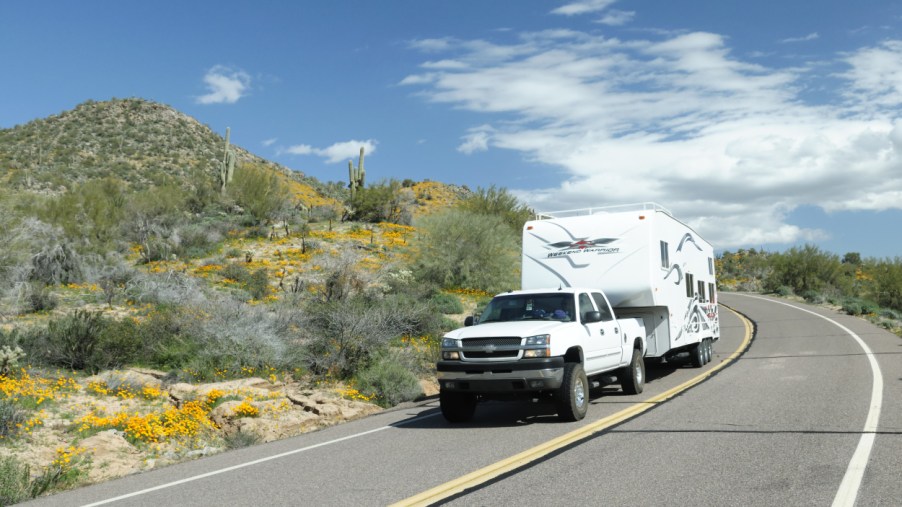
What Is a Safe Speed To Tow a Camper?
As the weather gets warmer and families grow tired of being indoors, more Americans are expected to be hitting the road for vacation soon. And many of them are venturing out with a camper or RV. You might be one of those families and have all of your to-do lists and safety checks ready.
Obeying the rules of the road is particularly critical when you’re pulling a camper. And depending on which state you’re passing through, there are speed limits worth noting. Highways can be especially dangerous when you’re trailering, making it important to drive at safe highway speeds. And you might be wondering, what is a safe speed to tow a camper?
Safe driving speeds for towing a camper, in general
Of course, not every camper trailer or RV is the same size, so maneuverability and optimum speed ranges will vary. But in general, when you’re pulling or driving something bigger than an average vehicle, it’s best to take it slow and at least 10 mph below posted speed limits.
Stay in the right lane to allow passenger vehicles to pass and be mindful of ample room when merging into other lanes.
Escapees RV Club also points out that new owners can determine safe driving speeds based on their camper’s tires. The tire manufacturers use load inflation charts that demonstrate optimum speeds at which the tires will function properly.
For example, most motorhomes have a maximum speed limit of 75 mph. Travel trailers and even fifth-wheel style campers are usually lower and around 60 to 65 mph. Operating above these recommended ranges for any length of time can cause heat to buildup in the tires, resulting in tire damage.
Different states have different requirements
While you’re doing your best to mind your camper’s tires on the highway, it’s also important to pay attention to the state through which you’re traveling.
Different states have laws and speed limits for towing campers. In the great wide open highways in Iowa, for example, interstate driving is 70 mph maximum, or as posted. Other states like Maryland, Massachusetts, and Minnesota, say trailer speeds are the same as those posted for passenger vehicles, according to AAA Auto Club.
If you’re planning a Florida road trip vacation, you’ll want to know about the speeding laws there, too. Restrictions include 30 mph in residential and business districts and 55 mph everywhere else.
Designated highways and turnpikes, however, range from 65 to 70 mph. And it’s one of the few U.S. states that actually enforces a minimum speed limit of 50 mph.
Driving through Louisiana poses even more differences, with speed limits varying upon the length of your camper, the existence of brake-equipped trailers, and nighttime driving.
When limits aren’t posted
Part of the allure of travel trailers and campers is exploring and finding adventures when taking the roads less traveled. In those cases, you might not see postings for speed limits or find regulations online to help.
Most RV veterans suggest sticking to the 63-mph mark, rarely exceeding 65 mph. And the Camper Report reminds vacationers to adjust speeds based on the road conditions and weather, too.
During poor visibility or weather, you’ll want to drive even slower to allow yourself enough time to stop if need be and maneuver without losing control of the added weight behind you.
Benefits of erring on the side of slow
When you’re pulling your camper, it’s best to err on the side of driving slower. Don’t be in a hurry to the point that you forget about the extra weight you’re pulling.
Stay a good 400 feet behind the driver in front of you. Allow yourself enough room to brake and stop. You’ll find you can save a little fuel economy with a steady, safe-towing pace.
Take it easy when you hit the road this spring and summer with your camper or RV. Speed limits matter, and slower is better. You’ll be safer operating at slower speeds. And you’ll save on gas and tire replacements, too, giving you more to spend on your actual vacation adventures.


